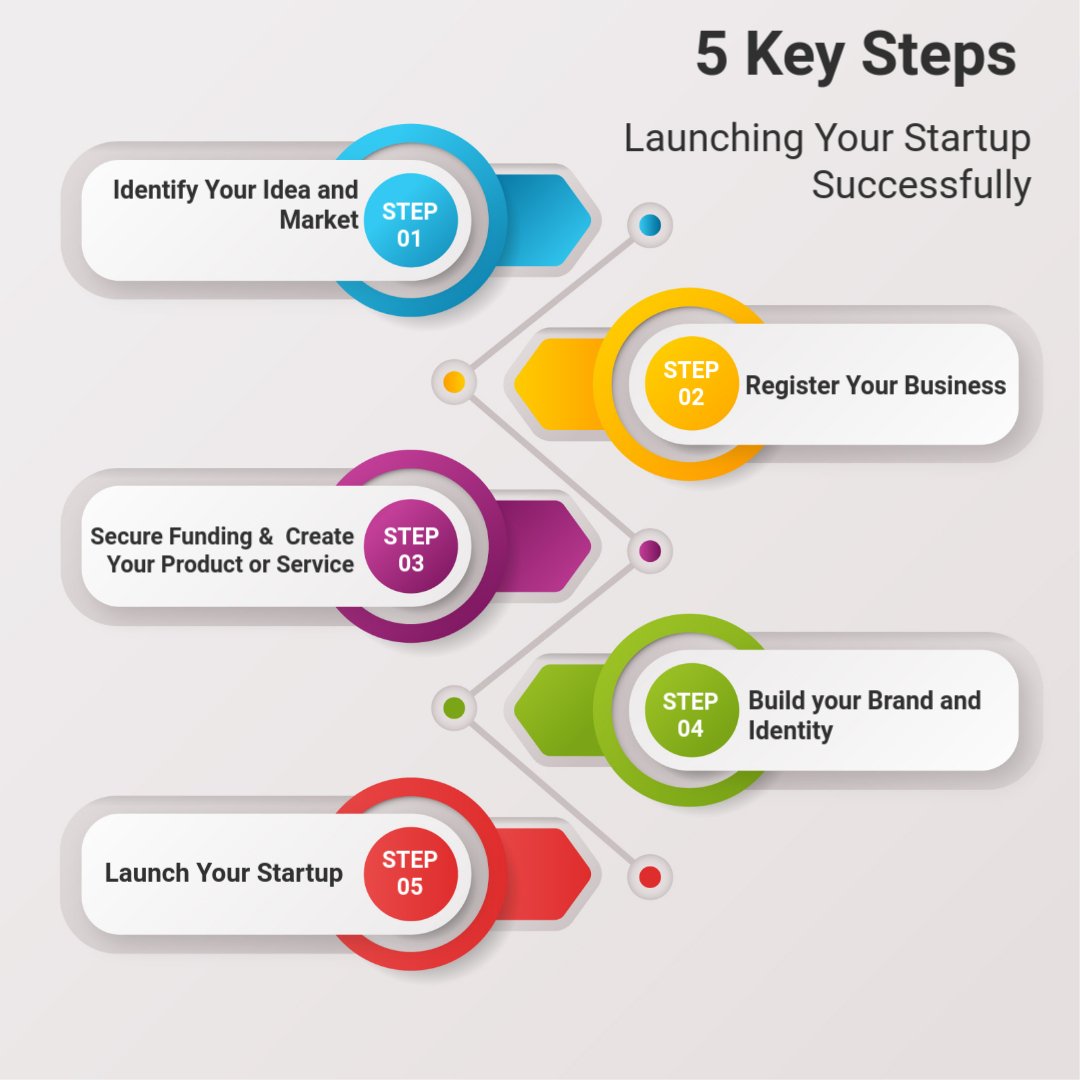In this blog, we’ll explore the 5 essential steps that can help you set a strong foundation, maximize your chances of success, and avoid common pitfalls along the way. Whether you’re a first-time entrepreneur or looking to refine your approach, these steps provide a roadmap for turning your startup dreams into a reality.

Identify Your Idea and Market
Identifying your idea and understanding the market are key initial steps when starting a business. Begin by focusing on a problem that you can solve with a new product or service. Make sure there is a real demand for your solution by gathering feedback from potential customers. Testing your idea early can help you refine it before you invest too much time or money.
Next, research the market to understand your target customers. Find out who they are, what they need, and how your product can help. Look at your competitors to see what they offer and identify gaps you can fill. This will help you position your business in a way that stands out and meets the needs of your market.
Register Your Business
Registering your business is an important step to legally operate and protect your startup. First, you must decide on a business structure, such as a sole proprietorship, partnership, LLC, or corporation. This decision impacts how your business is taxed, your ability to raise capital and your personal liability. Once you've chosen the right structure, register your business with the local or national authorities, which may involve filling out forms and paying a registration fee. You might also be required to obtain certain permits or licenses based on your industry.
Next, apply for a Tax Identification Number (TIN) or Employer Identification Number (EIN) from the government, which is necessary for paying taxes and hiring employees. Opening a business bank account is also essential to separate your personal and business finances.This process not only ensures that your business is legally compliant but also helps establish trust with customers and potential investors.
Secure Funding & Create Your Product or Service
Securing funding is a vital step in transforming your business idea into a successful venture. It provides the necessary financial support to bring your concept to life and drive growth. You can explore different funding options such as self-funding (bootstrapping), applying for loans, or seeking investment from angel investors, venture capitalists, or crowd funding platforms. It's important to create a solid business plan and pitch to attract potential investors, showing them why your idea has potential for growth and profitability.
Once you secure the necessary funds, focus on creating your product or service. Start by building a minimum viable product (MVP) — a basic version that meets the core needs of your customers. This allows you to test your idea in the market, gather feedback, and make improvements before investing heavily in development. The goal is to ensure your product or service solves the problem it was designed for and is ready to meet the demands of your target audience.
Build Your Brand And Identity
Building your brand and identity is essential for creating a strong impression and standing out in the market. Start by defining your brand’s core values, mission, and vision, which will guide your messaging and interactions with customers. Select a distinctive name, craft a one-of-a-kind logo, and develop a cohesive color palette and visual style that reflects your brand’s identity. These design elements are key to making your business stand out and fostering trust among your customers. Alongside the visual percept, it's mostly important to clarify the voice and tone of your brand. This will guide your communication across all platforms, ensuring your message resonates consistently with your audience.
In addition to visual identity, it’s important to establish a voice and tone for your brand. This includes how you communicate with customers across different channels, such as your website, social media, and advertising. Your brand’s voice should align with your target audience’s desires, whether it's friendly, professional, casual, or inspiring. Consistency in how you present your brand across all platforms helps create a unified experience and strengthens your connection with customers.
Launch your Startup
Finally launching your startup is a major milestone that requires careful execution to ensure it succeeds. To begin, make sure all the preparation work is complete, from finalizing your product or service to ensuring your website, social media profiles, and customer support systems are ready. Develop a clear marketing strategy that includes promotions, influencer collaborations, or launch events to create buzz. Announce your launch through various channels—email newsletters, social media, and press releases—ensuring that your audience knows when and where they can access your offering.
Once launched, monitor the performance closely to understand customer feedback, track sales, and measure engagement. It’s important to respond quickly to any challenges that arise, whether it's technical issues or customer concerns. Keep the momentum going with follow-up campaigns, product updates, and continued customer interaction. By staying flexible, adjusting strategies based on feedback, and focusing on delivering value, you can lay a strong foundation for long-term success after your launch.



